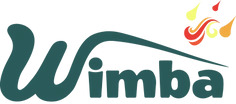June 12, 2024
How do I choose the right size marquee for my event
Planning an event can be both an exciting and daunting task. One of the critical decisions you'll need to make is choosing the right size marquee. This decision can significantly impact the success of your event, ensuring that your guests are comfortable and the atmosphere is just right. At Wimba, we’re here to help you make the perfect choice. Here’s a comprehensive guide to assist you in choosing the perfect marquee size for your event.
Understand the Nature of Your Event
The first step in selecting the right marquee size is to understand the nature of your event. Different types of events have varying requirements:
1. Weddings: These typically require more space for dining, dancing, and various activities. You'll need room for tables, a dance floor, a stage for a band or DJ, and perhaps a bar area.
2. Corporate Events: These might need areas for presentations, networking, dining, and entertainment. Depending on the formality and nature of the event, you may also need breakout areas or exhibition spaces.
3. Private Parties: Birthdays, anniversaries, or casual gatherings may not need as much space as a wedding but still require considerations for seating, entertainment, and food service.
4. Festivals and Fairs: These often need large, open spaces for stalls, stages, and large crowds.
Estimate the Number of Guests
The number of guests is a fundamental factor in determining the marquee size. As a general rule, more guests mean a larger marquee. Here are some guidelines to help you estimate space requirements:
- Seated Dinner: Allocate about 1.2 to 1.5 square metres per guest.
- Standing Reception: Around 0.6 to 0.8 square metres per guest.
- Theatre-Style Seating: Approximately 0.5 to 0.6 square metres per guest.
- Dance Floor: Reserve 0.5 square metres per guest for dancing.
For example, if you’re hosting a seated dinner for 100 guests, you’d need around 120 to 150 square metres. If there’s a dance floor and other amenities, you’ll need to add extra space accordingly.
Consider Additional Space Requirements
Beyond just guest seating, think about other areas and features that require space:
- Entrance Area: A welcoming entrance area can set the tone for your event.
- Bar and Buffet Areas: These require dedicated space, especially if you plan to have multiple food and drink stations.
- Stage and Dance Floor: Both need sufficient room to accommodate performances and dancing without crowding.
- Lounge Areas: For more informal settings, lounge areas with sofas and coffee tables can be very inviting.
- Bathrooms: If you’re setting up portable toilets, ensure there’s adequate space outside the main marquee area.
- Backstage and Storage: Don’t forget about the areas where staff can prepare and store items.
Site Constraints and Marquee Layout
The physical location where the marquee will be set up is crucial. Measure the area to ensure your marquee fits comfortably, considering any obstacles such as trees, buildings, or uneven ground. It’s also essential to allow for access routes, emergency exits, and additional structures like generators or catering tents.
The layout within the marquee should also be carefully planned. A poorly laid-out marquee can feel cramped even if it’s the right size. Make sure there's good flow and that guests can move easily between different areas.
Types of Marquees and Their Sizing Flexibility
Different types of marquees offer varying levels of flexibility in terms of size and configuration:
1. Frame Marquees: These are highly flexible and can be set up on various surfaces. They offer unobstructed internal space, making them ideal for events with complex layouts.
2. Pole Marquees: These traditional tents have poles and guy ropes, requiring more space and a grassy surface for setup. They offer a classic look but less internal flexibility.
3. Stretch Tents: Known for their aesthetic appeal and versatility, stretch tents can fit into irregular spaces and offer a unique, modern appearance.
4. Clear Span Marquees: These are similar to frame marquees but with transparent walls or ceilings, allowing natural light and scenic views to become part of the event decor.
Each type of marquee has its advantages, and the best choice depends on your specific needs and site conditions.
Budget Considerations
Your budget will inevitably influence the size of the marquee you can afford. Larger marquees and additional features like flooring, lighting, and heating can significantly increase costs. It's important to balance your space needs with your budget constraints. Getting quotes from multiple suppliers can help you find the best deal and avoid overspending. At Wimba, we offer competitive pricing and comprehensive packages to suit all budgets.
Consulting with Professionals
Finally, consulting with marquee hire professionals can provide invaluable insights. They can offer advice based on their experience and help you visualise different configurations. Professional marquee companies often provide site visits, which can help ensure that every detail is considered and nothing is overlooked. Wimba is always ready to provide expert guidance and site assessments to ensure your event is flawless.
Conclusion
Choosing the right size marquee for your event is a multi-faceted decision that requires careful planning and consideration. By understanding the nature of your event, estimating the number of guests, considering additional space requirements, and consulting with professionals, you can ensure that your marquee is perfectly suited to your needs. A well-sized marquee not only enhances the comfort and enjoyment of your guests but also contributes significantly to the overall success of your event. Whether it's a wedding, corporate gathering, private party, or festival, the right marquee will create a memorable and seamless experience for all involved.
For personalised assistance and expert advice, contact Wimba. We’re here to make your event a resounding success!

 Open 7 Days For collection & Delivery
Open 7 Days For collection & Delivery
 London Based Family Run Business
London Based Family Run Business
